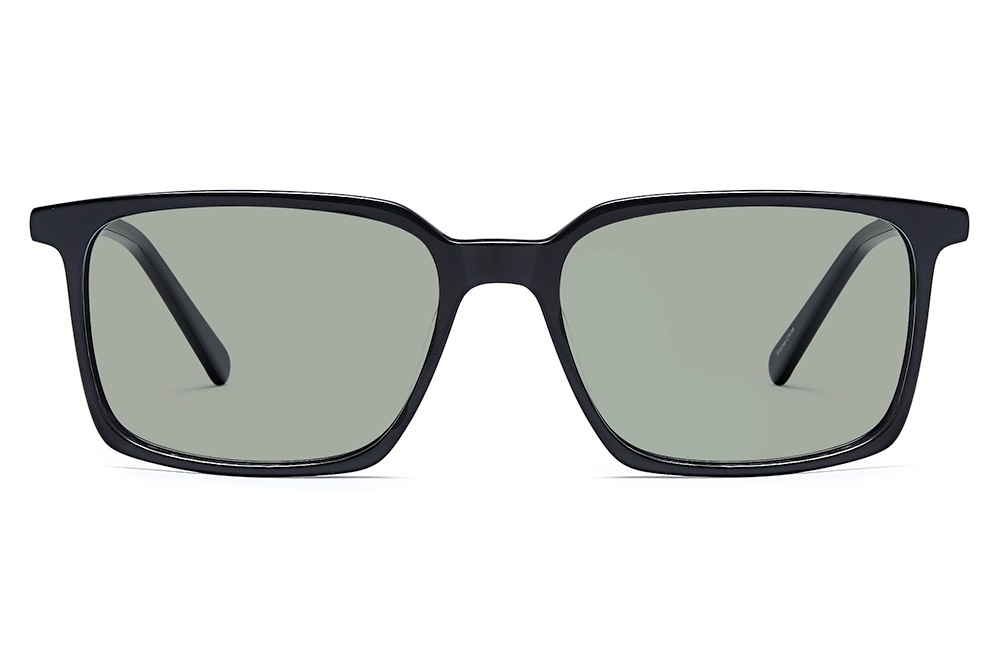How to Overcome Photophobia: A Light Sensitivity Guide
What is Photophobia?
Photophobia's literal meaning is 'fear of light'. Rather than an actual inherent fear of light, photophobia is commonly used to describe individuals that feel pain through light exposure or that are intolerant to light.
Usually, photophobia is caused by ophthalmic (relating to the eye) or neurological (relating to the central nervous system) problems and can even be caused by medication.

Causes Of Photophobia
Photophobia is a symptom of many conditions and not an eye disease. Photophobia itself can be disabling, and it can affect individuals through a noticeable increase in discomfort as they're exposed to more light throughout the day.
Migraine
One of the main neurological causes of photophobia (otherwise known as light sensitivity) is migraine. Migraine is a genetic neurological disorder affecting over 14% of the global population and it's a leading cause of disability per the World Health Organization. Over 80% of people with migraine experience photophobia as a symptom0.1.
More often, people with migraine experience light sensitivity during a migraine attack (also known as a migraine episode or 'migraines'). A portion of the migraine population, around 40%, experience light sensitivity continuously0.1..
In the 2019 MAST study1, over 6,000 patients with migraine reported their most bothersome symptoms to their physician. Over 49% of those patients chose light sensitivity as their #1 most bothersome migraine symptom.
Read more about the science behind light and migraine here.
Headache
Though headaches are common symptoms of migraine disease, migraine is not just a simple headache. Non-migraine related headaches may also cause photophobia.
People with tension headaches were found to have more light sensitivity than those without in a 2011 study3.
One-sided photophobia may be experienced in:
- Cluster headache
- Hemicrania continua
- Trigeminal autonomic cephalalgias (a type of primary headache occurring with one-sided head pain in the trigeminal nerve area, one-sided photophobia is a diagnostic criteria in this type of primary headache)
Dry Eye Disease
A study in 20112 found that tear dysfunction related corneal diseases like dry eye disease can cause visual irritation and visual symptoms including photophobia and blurred vision. Dry eye is one of the most common ocular causes of light sensitivity.
Fibromyalgia
Fibromyalgia is a disorder in which individuals experience musculoskeletal pain that is often accompanied by fatigue, sleep, memory issues, and emotional & mental distress. A reported symptom of fibromyalgia is light sensitivity.
Concussion, Post-Concussion Syndrome, and Traumatic Brain Injury (TBI)
In one study, over 70% of the patients being treated were found to have photophobia post-concussion7.
What's even more interesting, and unfortunate, is that light sensitivity remains an issue after the initial injury. In the first month after injury, light sensitivity is increased. While most mild injuries improve after 6 months, patients experiencing post-concussive syndrome may retain their increased photophobia 4.
Photophobia-Causing Medication
- Barbiturates
- Benzodiazepam
- Chloroquine
- Methylphenidate
- Haldol
- Zoledronate
Other Common Causes of Photophobia
As outlined by a study on photophobia3, the following is a list of common causes:
Ocular: Pterygia, Corneal neuropathy, Interstitial keratitis (Cogan’s syndrome)
Ocular - Anterior Segment: Ocular inflammation: (iritis, uveitis - an eye infection), Conjunctivitis, Corneal diseases (corneal neuropathy, interstitial keratitis), Blepharitis, Bilateral acute iris transillumination defects of the iris
Ocular - Posterior Segment: Vitritis, Uveitis, Photoreceptor dysfunction/retinal dystrophy, Albinism, achromatopsia, cone dystrophy, retinitis pigmentosa, Alström Syndrome, Sjogren-Larsson Syndrome, Retinal dystrophy
Optic Nerve: Optic neuritis, Papilledema
Chiasma: Pituitary tumor (including apoplexy), Hypophysitis
Occipital lobe: Hyperexcitability
Neurologic: Blepharospasm, Progressive supranuclear palsy, Meningeal irritation (meningitis, subarachnoid hemorrhage)
Thalamic Pathology: Tumor, Stroke, Hemorrhage
Psychiatric: Agoraphobia, Anxiety disorder (panic disorder), Depression, Hang-over headache
Other: Neurasthenia (chronic fatigue), Measles, Rabies, Inflammatory bowel disease, LASIK eye surgery
Why Bright Light Hurts
Fortunately for those experiencing light sensitivity attributed to the various causes previously discussed, research performed from 2010-2021 has further solidified and shed new light on the the physiologic and biologic link between light and pain. That means that we're finally understanding how light leads to pain.
Researchers actually found the specific cells, called intrinsically photosensitive retinal ganglion cells (ipRGCs), and namely melanopsin secreting cells at the retina, that play a role in causing pain to those experiencing light sensitivity. What's more interesting, is that these photoreceptors are most affected by only certain and specific wavelengths of light in the visible light spectrum (specific colors of light).

Certain colors of light cause the brain to trigger larger, more irritable electrical signals in the brain. Melanopsin was found to be peak activated in5:
- The upper blue range, from 450nm to 500nm
- In the amber light range of 550nm-600nm
A corroborating Harvard study found that painful light, that was shown to increase migraine related headache pain, exists in the following ranges6:
- Blue
- Amber
- and Red
Green light was shown to incite less activity in the thalamus, the pain center of the brain, and could even potentially reduce pain in some people.
These findings solidify new pathways by which the individuals who are most sensitive can reduce the impact of light on their daily activities.

Ways To Cope With Photophobia
- Manage harmful light and discomfort at the source with Avulux Migraine & Light Sensitivity Glasses that filter the most harmful blue, red, and amber light while allowing in soothing green light, so you can reduce the impact of light on your daily activities, whether indoors or outdoors.
- Reduce the amount of light entering your home with black out curtains.
- Avoid bright sunlight.
- Install photophobia friendly lighting:
- Dimmable bulbs
- Bulbs with less flicker (fluorescent lighting is notoriously known for both producing a nausea-inducing flicker and painful wavelengths of light), both of which can be countered by the Avulux lenses.
- Migraine & photophobia friendly green light lamps
- Ask your physician about alternative medications that do not induce photophobia.
- Ask your physician about treatments for the underlying cause of your photophobia.
Glasses for Photophobia
An internet search would yield a list of different glasses, sunglasses, and lenses on the market. Understanding the differences between them without any background is daunting.
By piecing together recent research on light and pain and analyzing the studies that apply to today’s available lens options, the difference becomes much clearer.
The following paragraphs review:
- Non-evidence-based glasses (these options did not result in clinical or statistical significance in a clinical trial and their efficacy is limited or unknown).
- The new evidence-based (having proven clinical and statistical significance) Avulux Migraine & Light Sensitivity Glasses.
Non-Evidence-Based Recommendations
Over the years, there were limited solutions available to help manage photophobia. Options often presented to patients included:
- Colored glasses
- Sunglasses
- Polarized Sunglasses
- Light sensitivity glasses
- Precision tinted optical filters
- Blue light glasses
- FL-41 glasses
The one problem these often recommended lenses have in common is that the lens technologies used between studies differed, even between the same category of lens (e.g. ‘colored glasses’ in study A does not equal ‘colored glasses’ in study B) .
Historically, the researchers have not taken note of the light filtration properties of the lenses used and this often leaves patients, readers, and the medical community at a loss for which type of lens to use to best manage photophobia at the source, non-invasively.
Non-evidence-based Recommendations in Eyecare
Often times, eye care professionals remain unsure or uncomfortable when patients ask them which lenses to use for their light sensitivity. Without solid, evidence-based research to confidently recommend an optical solution, eye care professionals may forego confidently recommending any at all.
If a patient persists, non-evidence-based solutions may be recommended, as some eye care professionals may not have yet found more concrete medically-backed photophobia management options.
The Problem with Non-Evidence-Based Photophobia Glasses Recommendations
Previous studies on non-evidence-based: precision tinted lenses7, colored lenses8, or FL-41 lenses9 do not specify which exact lens was used in the study. Moreover, neither clinical nor statistical significance was reached in managing light sensitivity (meaning it didn’t prove enough efficacy in reducing symptoms and it wasn’t a large enough test to show that it would apply to a larger population consistently).
Another issue is inconsistency. Precision tinted lenses, colored lenses, blue light lenses, or FL-41 can point to tens if not hundreds of different lenses with different filtration properties. These are now categories of lenses, yet there aren’t strict rules detailing the exact properties of these lenses.
This creates a problem because lenses often differ greatly, unless the same manufacturer or optical engineer is consistently performing quality control and manufacturing the components of that lens to an exact specification. Past clinical research claiming success with precision tinted lenses, FL-41, green light glasses, blue light glasses, or light sensitivity glasses are not providing the specifications necessary to reproduce the lens and therefore the results.
Even more, past research on these lenses only brought forth a hypothesis that using precision tinted optical lenses could help with light sensitivity, they weren't certain why and how the lenses were helping and the amount of relief wasn't well measured.
How Sunglasses for Photophobia Can Worsen Light Sensitivity
While the thought of wearing the darkest possible sunglasses might sound like a great idea to those experiencing severe pain, they can actually make you even more sensitive to light.
Continuous use of a dark tint or sunglasses can cause chronic dark adaptation. Chronic dark adaptation happens when your eyes become accustomed to a darkened environment. Your eyes start to become more sensitive to light as you're adapting to living in a darkened environment and your eyes compensate by working to allow in more light to help you see. This can also happen by continuously living in a dark room.
Chronic dark adaptation creates a reliance on sunglasses, or a dark room, and makes it even more difficult for photophobia patients to cope and overcome their light-triggered pain.
It's important that the glasses you wear to manage your light exposure allow in a fair balance of light as to not cause chronic dark adaptation.
Generic non-evidence-based Glasses are Temporary Solutions
While any reduction in light exposure may be better than no reduction at all, these non-evidence-based and generic solutions are stopgaps as they have not proven clinical significance (meaning the reduction in symptoms was not impactful enough).
According to the science, the above non-evidence-based lenses aren't targeting all of the most painful wavelengths of light and they often block too much soothing green light. Some of them can even cause chronic dark adaptation.
The First Evidence-Based Migraine & Light Sensitivity Glasses
Initially designed by a neuro-ophthalmologist and optical engineer, the Avulux lens precisely filters up to 97% of the most harmful wavelengths of light while allowing in over 70% of the soothing green light.

Avulux® Migraine & Light Sensitivity Glasses differ in that:
- They are a patented, multi-band precision optical filter using a nano-molecular technology designed by physicians and engineers.
-
The Avulux team created a migraine & light sensitivity optical lens that selectively filters harmful light and has been clinically proven by independent clinical trials. Wearing Avulux to manage light may help those living with migraine (independent trials mean that the researchers running the trials were independent and separate from the Avulux team).
-
The exact Avulux lenses tested in the trials are available to customers today.
- No negative side effects were reported through independent clinical trials.
- Avulux does not cause chronic dark adaptation.
- Avulux glasses can be worn indoors (e.g. while in front of a computer screen, phone, or TV) or outdoors (reducing the need to carry or buy two pairs of glasses).
- Avulux is patented and are the only glasses on the market that precisely align with the most recent science to effectively manage light sensitivity and filter harmful light.
- Avulux lenses are color neutral, so they do not distort your color perception, therefore maintaining your quality of life.
- Avulux is a Class I Medical Device in Canada, the EU, and the UK and a General Wellness device in the USA.
While there are many options on the market, with prices ranging from ten to hundreds of dollars, Avulux is the only option available that has been clinically tested on patients with episodic migraine to prove its efficacy and that aligns with the peer reviewed and internationally recognized research on light and pain (view a side-by-side comparison here).
If you're going to wear glasses to lessen the impact of light on your daily life, it's essential that Avulux is one of the glasses you try. You even have 60 days to try them so you can be sure you’re happy with them.
Conclusion
There are various causes of photophobia, and the pain experienced through light can be caused by various ocular or neurological conditions as well as medication.
Some of these conditions are treatable, while others have no cure. While light has historically been managed through non-evidence-based solutions like sunglasses or colored glasses, the Avulux migraine & light sensitivity glasses are finally an evidence-based tool available to customers and eye care professionals.
Through the use of Avulux, the avoidance of bright light, installing photophobia friendly lighting, and treating the underlying cause of your photophobia you can better manage the impact of light on your daily life.
References:
0.1 Wu Y, Hallett M. Photophobia in neurologic disorders. Transl Neurodegener. 2017 Sep 20;6:26. doi: 10.1186/s40035-017-0095-3. PMID: 28932391; PMCID: PMC5606068.
1 Lipton, R.B., Munjal, S., Alam, A., Buse, D.C., Fanning, K.M., Reed, M.L., Schwedt, T.J. and Dodick, D.W. (2018), Migraine in America Symptoms and Treatment (MAST) Study: Baseline Study Methods, Treatment Patterns, and Gender Differences. Headache: The Journal of Head and Face Pain, 58: 1408-1426. https://doi.org/10.1111/head.13407
2 Pflugfelder, Stephen C. “Tear dysfunction and the cornea: LXVIII Edward Jackson Memorial
Lecture.” American journal of ophthalmology vol. 152,6 (2011): 900-909.e1.
doi:10.1016/j.ajo.2011.08.023
https://pubmed.ncbi.nlm.nih.gov/22019306/
3 Digre, Kathleen B, and K C Brennan. “Shedding light on photophobia.” Journal of
neuro-ophthalmology : the official journal of the North American Neuro-Ophthalmology Society vol. 32,1
(2012): 68-81. doi:10.1097/WNO.0b013e3182474548
https://journals.lww.com/jneuro-ophthalmology
/Fulltext/2012/03000/
Shedding_Light_on_Photophobia.16.aspx
4 Bohnen, N., Twijnstra, A., Wijnen, G., & Jolles, J. (1991). Tolerance for light and sound of patients with persistent post-concussional symptoms 6 months after mild head injury. Journal of neurology, 238(8), 443–446. https://doi.org/10.1007/BF00314651
5 Noseda R, Kainz V, Jakubowski M, et al. A neural mechanism for exacerbation of headache by
light. Nat Neurosci. 2010;13(2):239–245. doi:10.1038/nn.2475
https://www.ncbi.nlm.nih.gov
/pmc/
articles/PMC2818758/
6 Rodrigo Noseda, Carolyn A. Bernstein, Rony-Reuven Nir, Alice J. Lee, Anne B. Fulton, Suzanne M. Bertisch, Alexandra Hovaguimian, Dean M. Cestari, Rodrigo Saavedra-Walker, David Borsook, Bruce L. Doran, Catherine Buettner, Rami Burstein, Migraine photophobia originating in cone-driven retinal pathways, Brain, Volume 139, Issue 7, July 2016, Pages 1971–1986, https://doi.org/10.1093/brain/aww119
7Huang, J., Zong, X., Wilkins, A., Jenkins, B., Bozoki, A., & Cao, Y. (2011). fMRI evidence that
precision ophthalmic tints reduce cortical hyperactivation in migraine. Cephalalgia : an international journal of
headache, 31(8), 925–936. https://doi.org/10.1177/
0333102411409076
8 Clark, J., Hasselfeld, K., Bigsby, K., & Divine, J. (2017). Colored Glasses to Mitigate
Photophobia Symptoms Posttraumatic Brain Injury. Journal of athletic training, 52(8), 725–729.
https://doi.org/10.4085/1062-6050-52.4.04
9Good PA, Taylor RH, Mortimer MJ. The use of tinted glasses in childhood migraine. Headache. 1991
Sep;31(8):533-6. doi: 10.1111/j.1526-4610.1991.hed3108533.x. PMID: 1960058.
https://pubmed.ncbi.nlm.nih.gov/1960058/










